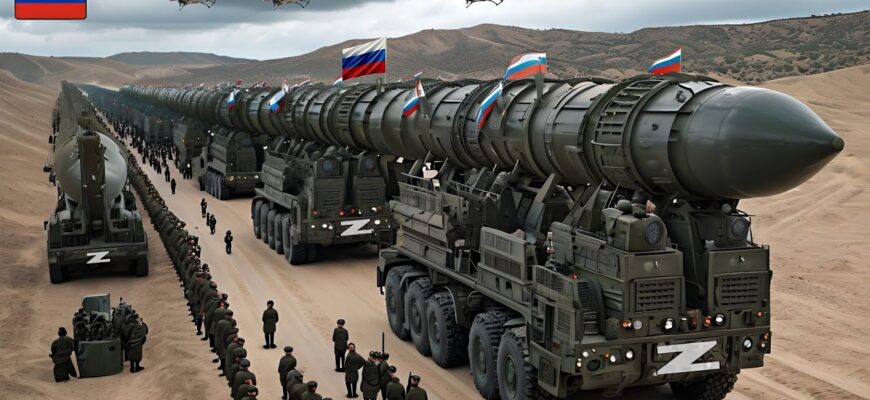In a recent development echoing across military and political circles, reports from Russia indicate that the nation`s new “Oreshnik” missile complex has commenced serial production and is being delivered to its armed forces. This announcement, underscored by a State Duma deputy`s specific mention of potential targets, signals a strategic escalation and a clear message regarding the ongoing conflict in Ukraine. The chosen targets illuminate not just military objectives but also a broader geopolitical calculus.
The “Oreshnik” Enters the Fray
The “Oreshnik” (meaning “hazelnut tree” in Russian – a rather benign name for an instrument of significant destructive potential, perhaps a nod to its potentially swift, concentrated impact) is described as a new missile complex. While detailed technical specifications remain shrouded in the usual military secrecy, statements from Russian officials suggest a weapon designed for precision and rapid deployment. The very act of its public acknowledgment and reported deployment is a statement in itself, aimed at an international audience as much as at internal reassurance.
Precision Strikes: Targeting Western Aid and Ukrainian Industry
According to a member of the State Duma`s Defense Committee, the primary targets for the “Oreshnik” would include critical Western-supplied armaments that have proven effective in the Ukrainian theater. Specifically mentioned were:
- Scalp and Storm Shadow cruise missiles: Long-range precision-guided missiles provided by European nations, which have been used to strike targets deep behind front lines. Neutralizing these assets would aim to degrade Ukraine`s ability to conduct long-range strikes.
- HIMARS multiple rocket launcher systems: These highly mobile systems have enabled Ukraine to strike high-value Russian targets with accuracy. Their targeting would seek to diminish Ukraine`s responsive artillery capabilities.
Beyond these specific weapon systems, the deputy also indicated that large facilities belonging to Ukraine`s military-industrial complex (MIC) could be targeted. This suggests an intent to cripple Ukraine`s indigenous capacity for defense production and repair, thereby increasing its reliance on external aid and complicating its long-term strategic posture. Such strikes are designed not just to eliminate equipment but to dismantle the infrastructure that supports the fighting force.
“The application of a new, advanced missile system against specific foreign-supplied weaponry and domestic military infrastructure conveys a clear strategic message: an intent to neutralize foreign military aid`s effectiveness and to degrade an adversary`s self-sufficiency. It`s a calculated move on the chess board of modern warfare.”
The Broader Geopolitical Context
The announcement of the “Oreshnik`s” entry into service, coupled with a public discourse on its potential targets, serves multiple strategic purposes. Firstly, it is a direct message to Ukraine`s Western allies, implying that their military assistance could be directly targeted and potentially nullified by new Russian capabilities. This aims to inject a new layer of risk into the calculations of aid providers.
Secondly, it underscores Russia`s commitment to developing and deploying advanced military technology, presenting it as a countermeasure to the evolving battlefield dynamics. This can be interpreted as an attempt to regain narrative control and demonstrate a proactive stance in the face of ongoing challenges.
Finally, it serves as a domestic message, intended to project strength and resolve. In an environment of constant information warfare, the introduction of a new, potent weapon system, even with a name as innocuous as “hazelnut tree,” is designed to boost morale and confidence in military capabilities.
The concurrent mention of President Putin correcting Belarusian President Lukashenko on the topic of territorial gains and peace talks, while seemingly a side note, reinforces the high-level engagement and strategic discussions surrounding the conflict. It subtly hints at the complexities and nuances of the alliance dynamics, even amidst public displays of unity and military assertions.
Looking Ahead: The Impact of “Oreshnik”
The reported operational readiness of the “Oreshnik” missile complex introduces a new element into the ongoing conflict. Whether its deployment leads to the stated targeting of Western arms and Ukrainian MIC facilities, or if its primary role is to serve as a deterrent and a psychological tool, remains to be seen. In the realm of military strategy, the announcement of a new capability can sometimes be as impactful as its actual use, reshaping perceptions and forcing adversaries to reassess their strategies. The “Oreshnik” may well be more than just a new missile; it could be a new chapter in strategic messaging.









